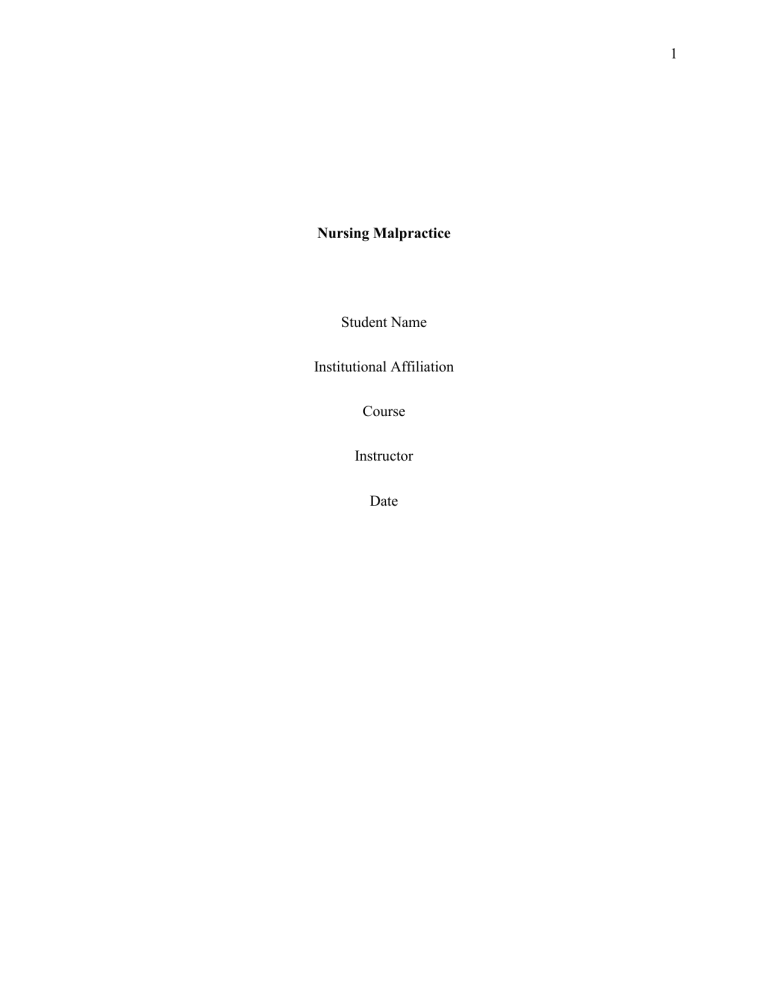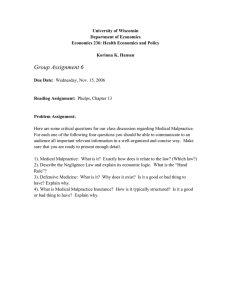
1 Nursing Malpractice Student Name Institutional Affiliation Course Instructor Date 2 Nursing Malpractice There exist several nursing issues at workplaces that affect the performance of nurses. In particular, the issue of nursing malpractice is escalating, resulting in a higher risk of lawsuits. The authors of the article Perianesthesia Nursing Malpractice: Reducing the Risk of Litigation, Lyerla Frank and Jamie Danks, have discussed the issue of nursing malpractice. I have chosen this article to understand the reason behind the rapid increase in nursing malpractices. Nursing malpractices are within the state jurisdiction; therefore, the attorney has to provide substantial evidence involving four elements including the existence of a nurse-patient relationship, failure to provide the standard care, damages sustained by the patient, and the action of the nurses that led to harm (Frank & Danks, 2019). The article suggests that the malpractice claim may assert that a nurse was reckless in providing care. Some of the common causes associated with nursing malpractice include the omission of documentation, not following standard care, negligence of communication, not acting as an advocate for the patient, and improper delegation (Frank & Danks, 2019). Other notable causes of malpractice include failure to institute the chain of command and negligence in reporting abnormal assessment data. The article has also highlighted the effects of nursing malpractice, such as psychological and social effects on the nurses and the loss of key staff members. In brief, it is notable that the issue of nursing malpractices is a hindrance to effective nurses’ performance. The article has highlighted some of the common causes of malpractices, including failure to document, communication negligence, and improper delegation. Therefore, the article has recommended that nurses should be acquainted with the legal process associated with a malpractice claim. 3 Reference Frank, L., & Danks, J. (2019). Perianesthesia nursing malpractice: Reducing the risk of litigation. Journal of PeriAnesthesia Nursing, 34(3), 463468. https://doi.org/10.1016/j.jopan.2018.10.001
